

 Quixote Winery, from the exterior, is visually one of Napa Valley’s most intriguing wineries (construction was completed in 2000). Quixote resembles a building out of a fairy tale; the reason being is that it was designed by the famous Viennese creative (often working in the nude) artist Friedensreich Hundertwasser. He was born in Austria as Friedrich Stowasser in 1928 and died in Australia of a heart attack while aboard the Queen Elizabeth II in 2000. After World War II he started signing his works simply as Hundertwasser. In the early 1970s he purchased property in and became a citizen of New Zealand. He was an extremely successful artist. Besides creating art, he was also an environmental activist.
Quixote Winery, from the exterior, is visually one of Napa Valley’s most intriguing wineries (construction was completed in 2000). Quixote resembles a building out of a fairy tale; the reason being is that it was designed by the famous Viennese creative (often working in the nude) artist Friedensreich Hundertwasser. He was born in Austria as Friedrich Stowasser in 1928 and died in Australia of a heart attack while aboard the Queen Elizabeth II in 2000. After World War II he started signing his works simply as Hundertwasser. In the early 1970s he purchased property in and became a citizen of New Zealand. He was an extremely successful artist. Besides creating art, he was also an environmental activist.
Two museums house permanent collections of his work including the Museum Hundertwasser in Vienna which opened in 1991 and the Hundertwasser Art Center (HAC) in Whangārei on New Zealand’s north island (north of Aukland) which opened in 2022. And the Hundertwasser Non-profit Foundation is based in Vienna with both a museum gift shop and an online store carrying a wide variety of Hundertwasser themed items.
While this is his only structure built in North America, he created a number of well-known works in Europe including a housing complex in Vienna in which some of the rooms feature real trees growing out of windows. His work is all about curvilinear forms and avoiding vertical design in structures or the use of straight lines. He tried to incorporate buildings that blend in with nature, hence the roof of this winery is covered with grass and small olive trees. Two large “hills” of dirt were built up in front of the winery which now hide the building very well (helped in part by the grass that grows here).
One of Friedensreich’s philosophies was to never throw away construction materials even if they break so this winery has several sections constructed of broken material. It took over ten years to construct, partly due to the rigidity of his design ideas – he would visit the winery and find something he didn’t like (sometimes major), and it would have to be entirely torn down and reconstructed.
Once he visited the winery during construction and whacked on a nice hand-made column imported from Europe with a hammer. The column looked too nice for his taste, and he wanted to give it a broken look all the while, the founder and owner at the time, Carl Doumani looked on in disbelief.
And another cute story; this one involved their attempted first meeting: Carl was to meet Friedensreich in a restaurant but after some time Friedensreich’s agent showed up and told Carl that Friedensreich had to cancel their meeting because he was spending some time with the “ladies”. Friedensreich was truly a free soul who lived his life impulsively in strict accordance with his tastes, desires and imagination.
Carl was born and raised in the great city of Los Angeles where he eventually made a career of property development and restaurant ownership. Carl is part of the same family that was involved in casinos including at one point in the 1970s, brothers Edward and Fred Doumani owned the Tropicana Resort and Hotel in Las Vegas. And with another Napa Valley connection, Edward and Fred Doumani financed $30 million into the film, The Cotton Club, directed by Napa Valley winery owner, Francis Ford Coppola. Prior to his wine ventures in Napa Valley, Carl was a successful real estate developer based in Santa Monica and owner/co-owner of several restaurants including two Mexican restaurants of the same name, the original El Toril in Westwood at 1077 Broxton Ave and the newer El Toril at 365 N. La Cienega in West Hollywood (both long since closed).


 Carl first came to Napa Valley in 1969. Associated with the Napa Valley for decades, Carl was the founder of the nearby Stags’ Leap Winery in 1972. The driveway to both wineries are the same until finally splitting off to each respective property. After selling Stags’ Leap Winery in 1997 to Beringer Wine Estates (now owned by Treasury Wine Estates), Carl kept some of his original land next door and made the first vintages under Quixote in the late 1990s. The land the Quixote resides upon used to be part of Stags’ Leap Winery but was sectioned off as part of the sale of Stags’ Leap Winery.
Carl first came to Napa Valley in 1969. Associated with the Napa Valley for decades, Carl was the founder of the nearby Stags’ Leap Winery in 1972. The driveway to both wineries are the same until finally splitting off to each respective property. After selling Stags’ Leap Winery in 1997 to Beringer Wine Estates (now owned by Treasury Wine Estates), Carl kept some of his original land next door and made the first vintages under Quixote in the late 1990s. The land the Quixote resides upon used to be part of Stags’ Leap Winery but was sectioned off as part of the sale of Stags’ Leap Winery.
Carl was also associated with Encantado, a Mezcal brand originating in Oaxaca, Mexico. Along with his longtime partner, Pam Hunter (died in 2010), they developed and began importing this product into the U.S. market in the mid 1990s.
Carl sold Quixote in 2014 to Jinta Vineyards and Winery, a subsidiary of Le Melange, a Chinese-owned private firm whose parent company Jilin Yatai Group Company Ltd. (founded 1993) is based in Changchun, in the northeastern part of China. We spent some time near this province years ago in Shenyang and vicinity with several Napa Valley vintners on a Napa Valley focused wine trip. The amount of construction and development in cities we had never heard of was mind boggling. The state-owned Yatai Group is listed on the Shanghai Stock Exchange and is involved in a number of businesses and operations including building materials and cement manufacturing, real estate and property development, finance and pharmaceuticals. The company employs nearly 20,000 people. Jinta Vineyards and Winery also owns Hannah Nicole Vineyards and Winery in Brentwood, CA. Refer to our notes at the bottom of this review for more information about that winery.
After the sale of Quixote, Carl kept a small section of a hillside vineyard (abut 2 acres) for himself located just above the winery and near the small reservoir where he lives; as of our latest update, the grapes from this site are currently being sold to a small wine brand (Covalence) overseen by winemaker Aaron Pott. We made the initial introduction between the owners of Covalence and Aaron.
Once a vintner, always a vintner – not satisfied with retirement, Carl started another wine project called Como No wines which he operated for several years before ultimately ceasing production. And he was one of the founders of the still active Napa Valley based men’s only social group composed, mostly of vintners called the Gastronomic Order of the Nonsensical and Dissipatory (GONADS).
Incidentally, Carl’s daughter Lissa was a chef and co-owned and operated with her husband Hiro Sone, Terra Restaurant in St. Helena for 30 years until it finally closed in 2018, in part due to a shortage of qualified help.
Total annual production here is small; it has been higher but is currently around 2,000 cases with the focus being on Petite Syrah and Cabernet Sauvignon along with smaller productions of Malbec. All varieties for their wines are grown on site including the ubiquitous for Napa Valley Cabernet Sauvignon along with Petite Sirah and small sections of Malbec, Cabernet Franc and Petit Verdot. The property is 42 acres (located below the dramatic backdrop of the rocky Stags Leap Palisades) of which about 26 acres are planted to vines. The grapes are all farmed organically, and no synthetic pesticides or fertilizers are used. Quixote sometimes sells grapes but never purchase grapes – all wines are made from estate grown grapes only. Fortunately, the property is well served with water including several natural springs on site which feed the reservoir directly above and behind the winery. And several well-regarded winemakers have worked or consulted here over the years including Aaron Pott, Robert Smith (current winemaker) and Philippe Melka.
Quixote Vineyards is located about 3/4 of a mile drive from the Silverado Trail on a shared private road. Several of their neighbors are quite well-known including Shafer Vineyards and Stags’ Leap Wine Cellars. All visits are by reservation; guests can choose one of several experiences including a tasting, a tour and a tasting including an overview of the building, the unique history around its design and a walk through the winery and barrel room, or a seated tasting paired with small plates prepared by the winery chef including possibly a taste of something prepared using their Petite Sirah grapes. And a unique offering is the S’mores & Cabernet Tasting which includes a four year vertical of Quixote Cabernet Sauvignon. All guests with reservations are greeted with a glass of Quixote wine upon arrival, usually their rosé of Petite Sirah (which often sells out early in the year).
Visits to the cellar will include an overview of their winemaking. One item in this cellar which differs from other cellars are the brightly colored metal hoops on some of the barrels. The team at Tonnellerie Bossuet (barrel manufacturers) in France noticed the bright colors of the Quixote building and decided to try to complement these colors and painted the barrel hoops for Quixote’s first order from them. This tradition has continued. One might also spot images of famous musicians on some of the barrels including James Brown on their Petite Sirah, the Godfather of Soul for his influence on funk music and Malcom X on barrels of their extremely limited Petite Sirah Helmet of Mambrino (referring to this big and bold bottling).
Tastings are usually held in one of two rooms with the wines paired with several premium cheeses (including at the time of our latest visit, the delicious Barely Buzzed Cheddar) and other small bites (including a chocolate truffle made with Quixote Petite Sirah).

 If you feel unbalanced while standing in the rooms, it cannot be blamed on the alcohol. In reality, the floor undulates which is just another part of the quirkiness of this place; Friedensreich felt feet were best designed to walk on uneven surfaces so that is reflected in the design of the floor. Also note that no two windows are alike within the hospitality building; this was done on purpose of course.
If you feel unbalanced while standing in the rooms, it cannot be blamed on the alcohol. In reality, the floor undulates which is just another part of the quirkiness of this place; Friedensreich felt feet were best designed to walk on uneven surfaces so that is reflected in the design of the floor. Also note that no two windows are alike within the hospitality building; this was done on purpose of course.
The Hundertwasser Room is to the right of the hospitality space. This room contains a small model that Hundertwasser designed himself of Quixote Winery. Certain changes worth nothing differ between this model and the actual building. The model depicts the building as white and includes a fountain in a courtyard (which was never actually installed).
The Quixote labels were designed by Friedensreich (who was also a painter) and depict an image of his interpretation of the Quixote Winery building; these labels are reserved for their premium Quixote wines. The Panza label represents wines which are selectively distributed and may be blends rather than 100% varietal. The primary Quixote wines are all 100% varietal, and these are typically only available at the winery or through their website. And unlike many area wineries, Quixote offers older vintages available for sale and may taste visitors on some of these library wines. In addition, they maintain a limited selection of library large format bottles.
The first vintage of Quixote was from 1998; David Ramey was the winemaker back then and the wines were made at Rudd Winery as the production area at Quixote was not yet completed. All wines are bottled unfined and unfiltered.
Select Wines
Quixote introduced a new wine in 2020 called Rocinante, named after Don Quixote’s horse. Rocín in Spanish refers to a work horse. The 2020 Quixote Rocinante is a blend of 56% Cabernet Sauvignon, 20% Cabernet Franc, 13% Petite Verdot and 11% Malbec. It is deep ruby in color and nearly opaque in the glass; the bouquet shows aromas of crushed rock, violets, blueberries, old cedar box, and dried herbs. It is darkly fruited on the palate with flavors of blackberry, boysenberry and Pakistani mulberry. The tannins are ripe, resolved and rounded (gravelly) accompanied by bright acidity and an energetic and slightly savory finish. Lingers with flavors of red plum and some darker spices including light notes of crushed black pepper. Juicy. One might call this wine a crowd pleaser; we wouldn’t have any counter argument to that.
The 2018 Quixote Panza Petite Sirah is 100% varietal. This wine is dark purple in the glass; its inky darkness is very representative of the intense phenolics produced by this particular variety. The bouquet offers aromas of dark fruits including of black plum and blackberry along with some nuances of dark chocolate, black olive and hints of mocha very deep in the aromatics. Shows flavors of plum and cherry across the palate with earthy, chewy tannins that exercise a strong and long-lasting grip. This is a big bold badass Petite Sirah which is memorable because of its concentration, depth of flavor and accompanying structure. It is advisable to keep the wine wipes readily handy for your teeth when consuming this bottling.
The select vintages of Cabernet Sauvignon wines we have tried over the years have been medium bodied, featuring rounded and resolved tannins with highly appreciable fruit driven bouquets. Quixote’s philosophy is to refreshingly not over oak a wine and as a result, the varietal characteristics are showcased rather than secondary characteristics from oak aging. Depending on the vintage, these wines can be 100% varietal or blended with other varieties, but never with Petite Sirah. One word we have often used to describe these bottlings in particular is balance. Texturally the tannins are always well-integrated; these wines are styled to be approachable in their youth while displaying the characteristics to age for many years.
The 2016 Quixote Cabernet Sauvignon is deep ruby in color; the well-layered and attractive bouquet is sweetly fruited with aromas of blackberry, boysenberry, raspberry and dark licorice. The focus here is on the primary fruit characteristics with the oak playing a light supporting role. As the wine continues to breathe it opens to a note of chocolate and hints of baking spices. This bottling offers flavors of dark cherry, plum and raspberry. Its texture is an appealing hallmark, featuring broadly distributed chalky textured tannins and a lingering note of light toasted oak spice. This wine is very balanced and is aging quite well at the time of our tasting, 7 years post vintage.
The 2017 Quixote Cabernet Sauvignon is deep ruby; the aromatics are of blackberry, raspberry, plum, an initial and subtle note of leather, licorice, cloves and some Asian baking spices showing more as the wine has time to breathe in the glass. The palate is both red and dark fruited including of raspberry, plum and black cherry. The grainy textured tannins show more on the front of the palate and feel less chalky-like than the 2016 vintage (this wine is a year younger). The palate lingers with a hint of dried tobacco leaf, old cedar, cranberry, cocoa powder and a light dryness.


 The 2015 Quixote Petite Syrah is deep ruby in the glass; its core is opaque with purplish tinges framing the rim. We love wines that have aromatic character, and this wine certainly has this. Meaty and savory, this diverse and layered bouquet shows aromas of crushed pepper, black licorice, dried herbs, sweaty leather, bittersweet chocolate, hints of cedar and dark fruit notes. It aromas are gamey but not animalistic – as sometimes this variety can cross the threshold into the realm of ‘funky’. This gaminess does not translate onto the palate. Big and bold it reveals a noticeable density both in terms of fruit and structure. This wine is concentrated as this variety often is with flavors of plum, blackberry, boysenberry and chocolate. The finish is juicy and leaves one salivating. Firm, slightly chewy and earthy tannins linger for quite some time on this wine’s extended finish. We tasted this wine most recently 8 years post vintage; it has years of life ahead of it still.
The 2015 Quixote Petite Syrah is deep ruby in the glass; its core is opaque with purplish tinges framing the rim. We love wines that have aromatic character, and this wine certainly has this. Meaty and savory, this diverse and layered bouquet shows aromas of crushed pepper, black licorice, dried herbs, sweaty leather, bittersweet chocolate, hints of cedar and dark fruit notes. It aromas are gamey but not animalistic – as sometimes this variety can cross the threshold into the realm of ‘funky’. This gaminess does not translate onto the palate. Big and bold it reveals a noticeable density both in terms of fruit and structure. This wine is concentrated as this variety often is with flavors of plum, blackberry, boysenberry and chocolate. The finish is juicy and leaves one salivating. Firm, slightly chewy and earthy tannins linger for quite some time on this wine’s extended finish. We tasted this wine most recently 8 years post vintage; it has years of life ahead of it still.
The 2016 Quixote Petite Sirah is deep ruby and opaque in the glass; the aromatics are sweetly fruited and it does not have any of the meaty/savory character that is in the 2015 vintage. The bouquet offers aromas of dark ripe cherry, blackberry, Pakistani mulberry, warm melted chocolate, chocolate brownie, Graham cracker and old cedar box. The bouquet shows a bit riper than the 2015 vintage. The palate reveals primarily darker fruits including of blackberry, plum and cherry along with some lingering notes of chocolate. The tannins are almost sediment-like in their textural feel; they are long-lasting, chewy, grainy and grippy. Their presence eventually outpaces the fruit on the finish.
The 2004 Quixote Petite Syrah features a very fruit driven bouquet but also shows hints of chocolate, mocha and coffee; the palate offers both ripe blackberry and black cherry flavors. The finish is clean and long with beautiful silky tannins. Contrast this with the 2002 Quixote Petite Syrah which offers more of an earthiness, minerality, and dusty quality to the bouquet. It is not as fruit forward as the 2002 vintage. Flavors of plum, currant and blackberry are interwoven together nicely on the palate.
The 2014 Quixote Malbec is dark in the glass with purplish tinges on the rim. It is savory showing aromas of mushrooms, forest floor and earthy nuances – also somewhat floral with notes of violet along with a darker spice component. Approachable in its youth, the wine is medium bodied – there are no harsh edges across the palate. Savory, with lively acidity, the palate lingers slightly dusty with still tightly woven tannins. A red cherry tartness also shows on the finish.
Quixote’s most premium wines are bottled under the label Helmet of Mambrino (a Petite Sirah and a Cabernet Sauvignon). Mambrino is a fictional Moorish King whose helmet allowed him to be invincible and omnipotent. Cervantes even referenced this helmet in Don Quixote. And the light-hearted myth sometimes perpetuated by tasting room staff, indicates consumers of this wine will also gain similar powers. Each of these wines are generally produced in amounts of less than 100 cases a year and are always aged a minimum of 36 months in new French oak barrels.
And Quixote produces a limited production rosé of Petite Sirah; until the 2017 vintage this wine was made by saignée (bleeding off the juice) but starting in 2018 it is now made as a direct to press wine. The 2022 Quixote Rosé of Petite Sirah is a medium to deep salmon in color; the pretty aromatics smell fresh and lively and include scents of rose petals, raspberry and apricot. The flavors somewhat mirror that of the palate and also include ripe pomelo, pomegranate, a flinty character and a lingering sweetness of fruit. This flavorful bottling is best served chilled and is a wine that is easily and enjoyably consumed. Starting in 2022, a limited number of magnums were produced of this wine.
—
Their Cabernet Sauvignon is only sold direct to consumer through visits to the winery or the website while their Petite Sirah has some distribution locally at restaurants and select wine shops including locally sometimes at Oakville Grocery.
For more information, to schedule a tasting or to join one of their membership clubs (Quixote Club, 6 bottles twice a year / Quixote Gold Club, 12 bottles twice a year) or allocation list, visit: www.quixotewinery.com
Winery/Cellar
Hannah Nicole Vineyards and Winery
In 2013, Jinta Vineyards and Winery, a subsidiary of Le Melange, the same company that purchased Quixote acquired Hannah Nicole Vineyards and Winery in Brentwood, CA (Contra Costa County). This property was purchased in 1999 by Neil and Glenda Cohn with the intent to plant Granny Smith apples. But with falling apple prices they decided to plant Cabernet Sauvignon instead. Hannah Nicole was founded in 2001. The early vintages were produced by a winemaker in Madera, CA before the 18,000 square foot winery and hospitality center opened in 2009. The property is 80 acres of which approximately 54 are planted to grapes – all to French varieties (Bordeaux and Rhone).
Brentwood is a popular destination in the spring and summer for its U Pick Farms including cherries but it is also home to a handful of wineries.
The winery offers a spacious interior tasting area with several wine bars as well as outdoor spaces where one can enjoy their wines. Several tasting flights are offered or one can order wines by the glass; we recommend their highly floral Viognier which paired very well with the homemade mac-n-cheese we brought (the winery allows picnicking).
Enjoy the views of Mt. Diablo while playing bocce ball – astute visitors who have been in the cellar at Quixote Winery will notice several barrels with colorful painted metal hoops next to the bocce ball court. Presumably these are from the cellar at Quixote Winery. Live music is offered on certain weekends. And part of the property can be rented out for private weddings.
Reservations are not required for tastings. For more information, to purchase wine or to join their wine club, visit: www.hnvwines.com
Hospitality
Vineyards + Cellar


















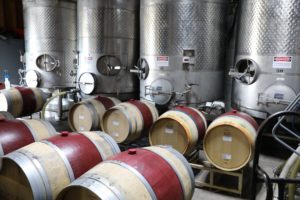
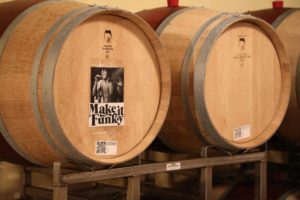






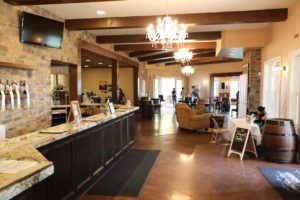













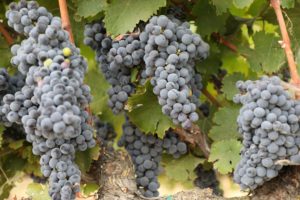
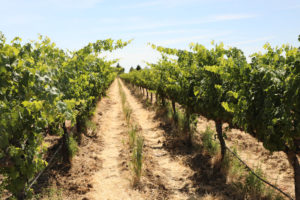
Hello we’ve been trying to find you for years and friends came for a tasting and love your wine. could we please visit in Jan 2015 Thank you Sandra Russo we”ll be at Harvest Inn 1/15-18.
Sandra – January is usually a much less busy time in the valley and a good month for visiting. I would reach out to the winery directly and ask for Mike, their new Estate Sales Manager.
Sandra – Patrick is their new Estate Manager.
Ryan is currently their Estate Manager.